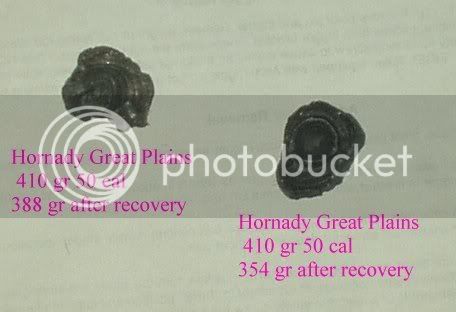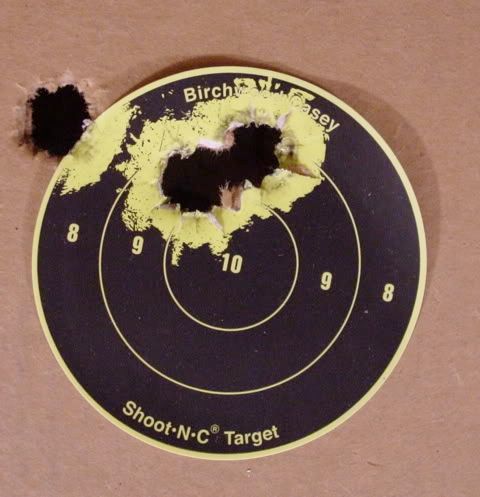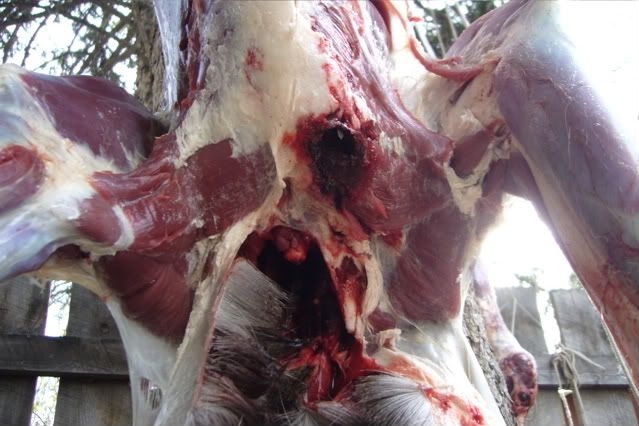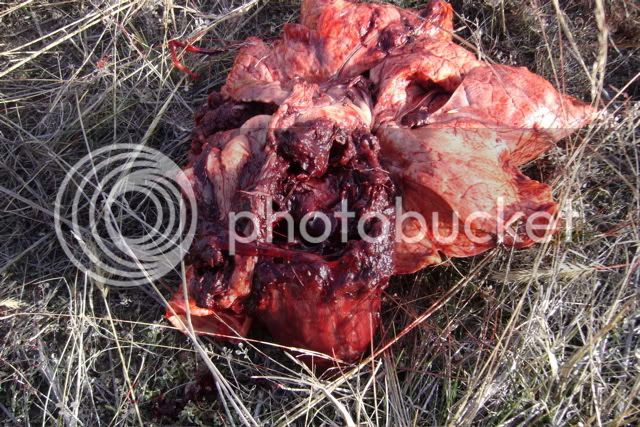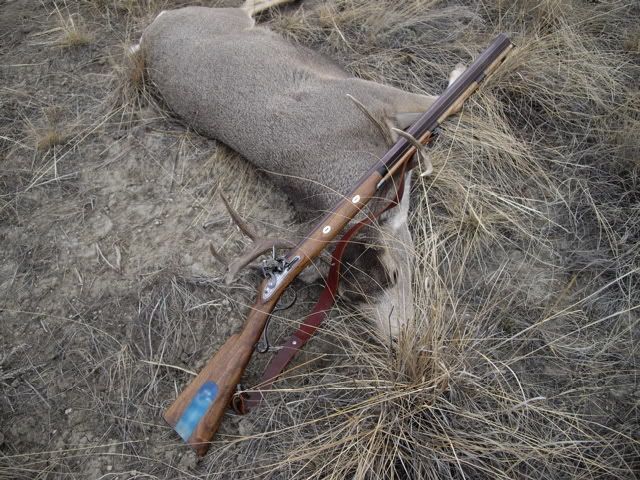Idaho Ron
58 Cal.
- Joined
- Mar 1, 2007
- Messages
- 2,729
- Reaction score
- 1,227
David Minshall said:We have one 'myth busting' post above that says "I can shoot up to 5 shots in a SUB 1” group before I need to clean." This is supported by a 4 shot group fired using Pyrodex. So is it sometimes 4 sometimes 5 shots; what happens when black powder is used? That does not appear to provide the consistency that I need. What is being achieved is good accuracy and in the hunting environment should yield excellent results. How does it stand up over long strings of shots though?
David, The picture I posted was only a 4 shot. Here is a 6 shot group it is with a different rifle but the same concept was followed. I shot until the group degraded. My statement that I can shoot up to 5 shots was probably more of an average than anything. Both of the guns I shoot paper patch in the most are going to put 5 shots in a sub 2" group without cleaning. I do this test for my own peace of mind. If I am hunting and I need to shoot follow up with other shots I am assured that I can shoot up to so many shots before I need to clean. I have never shot true black powder through these guns. To be honest it is too hard to get here in Idaho. To get it I would have to mail order it. With the extra cost involved I just don't mess with it. I only use powder I can get locally. :thumbsup:
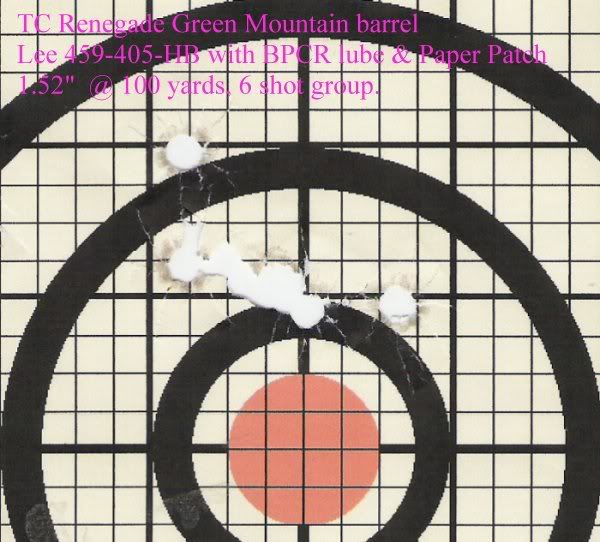
David Minshall said:I shoot long range target rifle out to 1200 yards with paper patched bullets. Course of fire is 15 match shots and 3 (or 5 depending on event) sighters. I need consistency across a long string of shots shooting 530+ grain bullets with 90-100 grains of black powder. I don't have the option to shoot short strings of shots until the group starts to open; that is throwing away points in a match.
Cleaning between shots permits the rifleman to maintain consistent barrel conditions across all shots.... It is about controlling fouling and eliminating variables. Without cleaning there is risk of pushing the bullet through the patch when seating the bullet. Similarly variations in muzzle velocity make a difference in elevation at long range which may not be apparent at short range.
I agree with you 100% No way would the loading practices that will work for me at 150 yards or less work at 1200 for you, or like I said even 300 yards. My point as you know, was at MY normal hunting ranges. I wanted my loads to be such that cleaning between shots in a field condition while following up a wounded animal was not needed. I also want to point out that for hunting, Paper Patching is not as usless as another post had thought it was.
David Minshall said:I read other peoples posts with care and understanding and avoid making reactionary statements. If I am ignorant of a subject I will seek to learn. If I have knowledge of a subject I will express my experience.
If you re-read my message above and apply some understanding you will note that I was referring to long range target shooting. Idaho Ron's experience seems to accord with my views on this subject:
Thanks David for clearing that up. :hatsoff:
David Minshall said:Idaho Ron said:I am talking about shooting at 150 yards or less for hunting accuracy.
When I start shooting out to 200 to 300 yards I clean between each shot, this is for target accuracy.
Study the reports of the 19th century long range matches and the international series at Creedmoor, Dollymount and Wimbledon. There you will learn what 19th century riflemen shooting paper patched bullets from muzzle and breech loading rifles did to wring out the best accuracy from their firearms. Come along to the World Long Range Championships at Camp Butner, North Carolina, next September and watch the riflemen shooting PP bullets and see what they do.
David
Man I would love to do that. Some day I will try to get that done. I would love to watch and learn about realy long range shooting. What you guys do at 1200 yards makes the 300 yard shots I do look like a chip shot. Thanks for clearing some things up. :thumbsup: Ron




